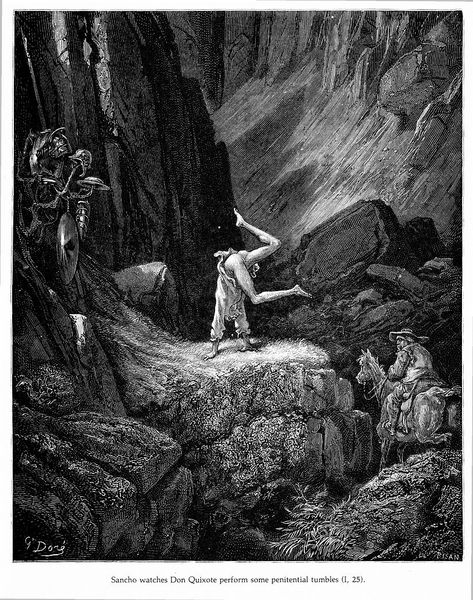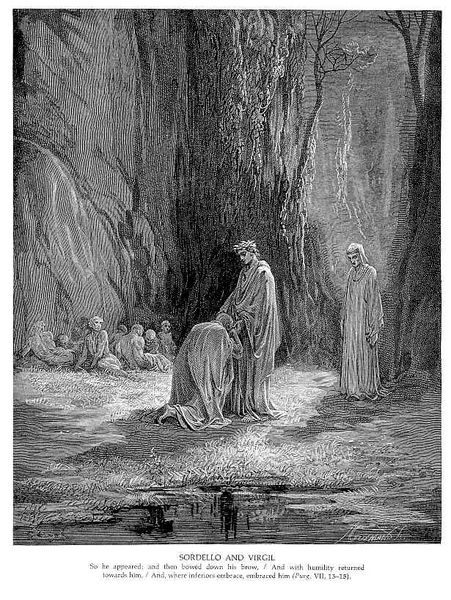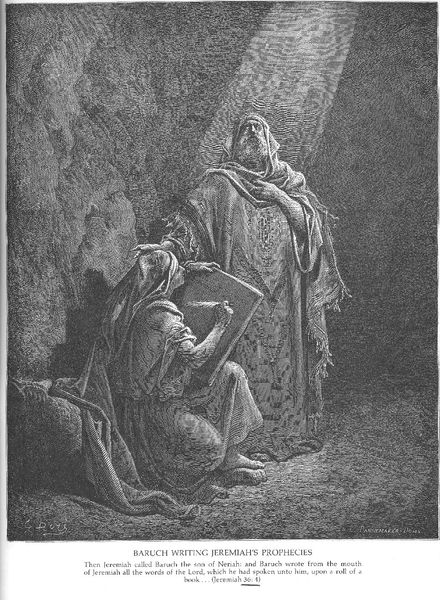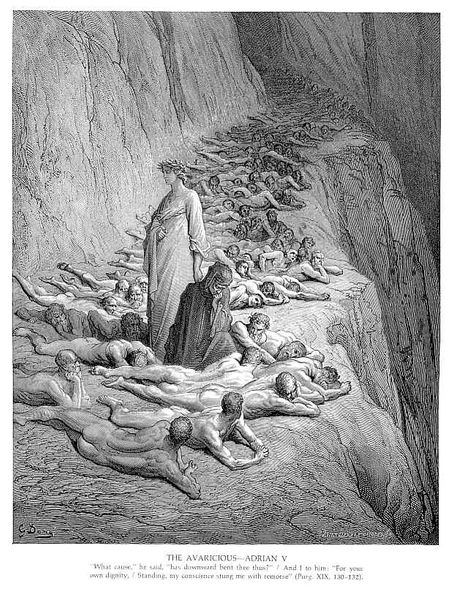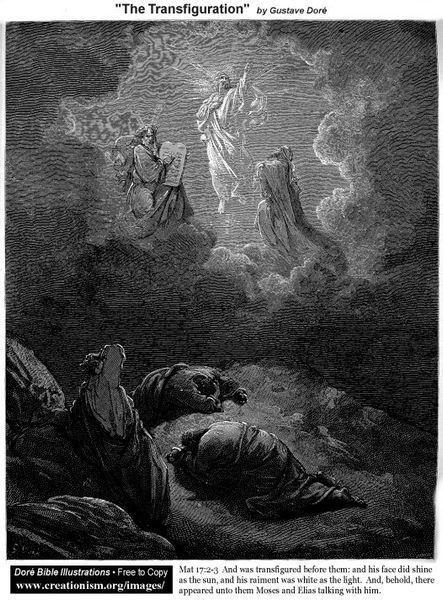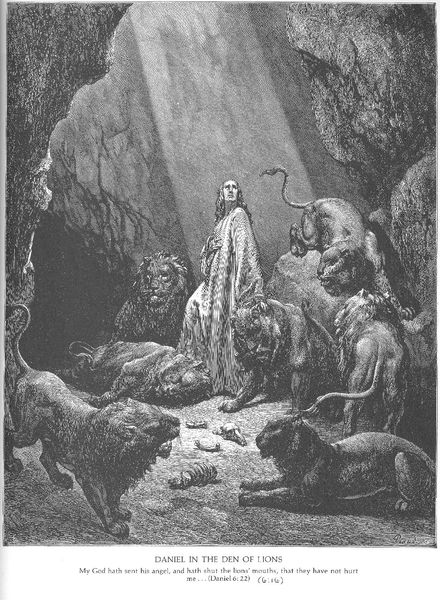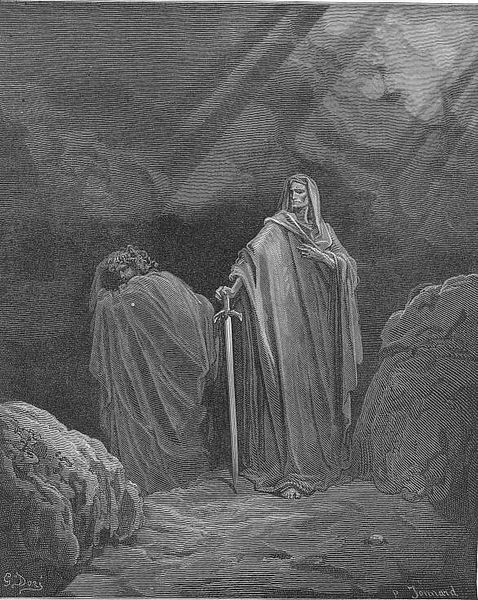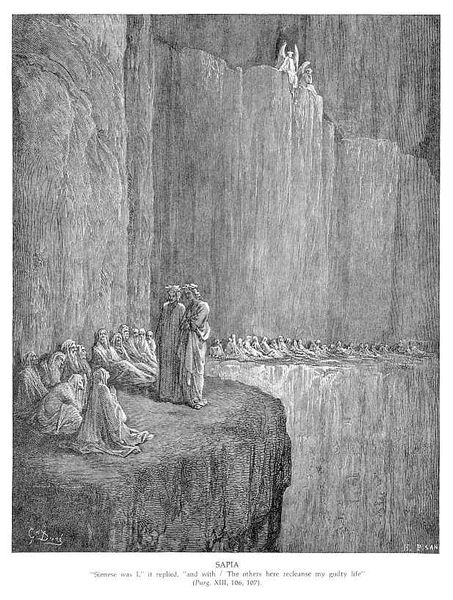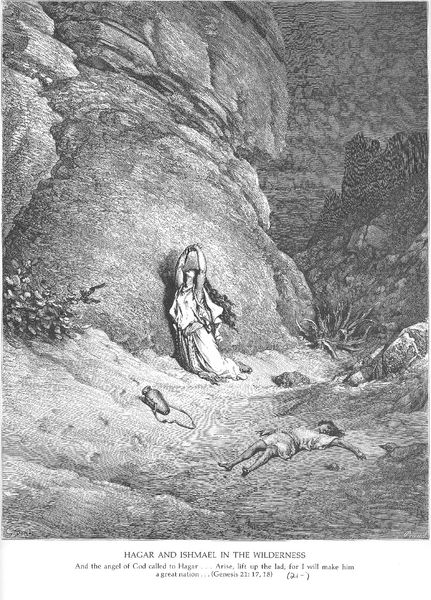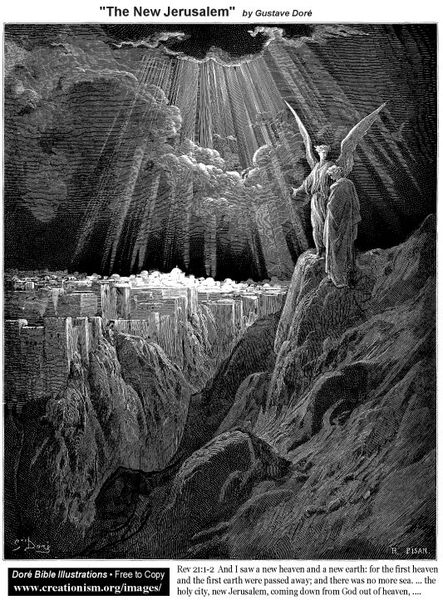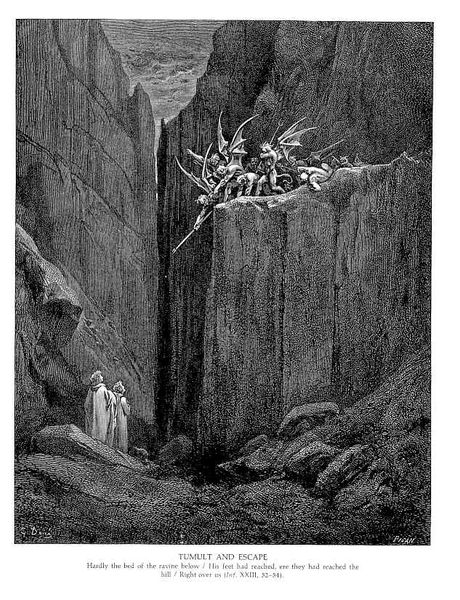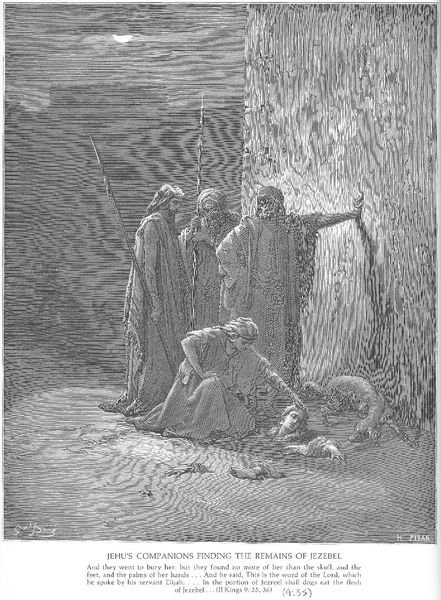
drawing, engraving
#
drawing
#
landscape
#
figuration
#
romanticism
#
arch
#
christianity
#
history-painting
#
engraving
#
angel
#
christ
Copyright: Public domain
Editor: So, this engraving is titled "The Resurrection," and it’s by Gustave Doré. It looks like a dramatic scene, really emphasizing the contrast between light and shadow. I am especially intrigued by how the angel seems to emerge from darkness to deliver the message to the women. How do you interpret this work? Curator: This piece, viewed through an activist lens, highlights the visual encoding of power dynamics. Consider the context: Doré, a 19th-century white European male, interpreting a foundational narrative of Christianity. The angel, bathed in light, literally stands on a higher plane than the mourning women, furthering existing power structures. How does this visual hierarchy relate to historical portrayals of gender and authority? Editor: That's a great point; the visual power dynamic is really noticeable now that you mention it. It seems almost… performative? Curator: Exactly! The theatricality is key. Doré's Romanticism often utilizes heightened emotion to drive the narrative, yet whose story is truly being told? Is it a story of hope and liberation for all, or a reinforcement of existing societal norms, cloaked in religious symbolism? Think about the historical role of the church; was it truly serving the oppressed or perpetuating systems of inequality? Editor: I never really thought about it that way before. I guess I was so focused on the religious narrative that I wasn't thinking about social critique. Curator: The engraving prompts us to consider the intersectionality of power, religion, and representation. Examining such depictions, alongside feminist theology or postcolonial biblical criticism, challenges us to analyze who is granted visual agency and whose perspectives are marginalized or erased. Editor: This has definitely opened up a completely different perspective on Doré's work. Curator: Absolutely. It calls for critical engagement and ongoing dialogue. Analyzing how social contexts shape both artistic production and our interpretations remains central.
Comments
No comments
Be the first to comment and join the conversation on the ultimate creative platform.

